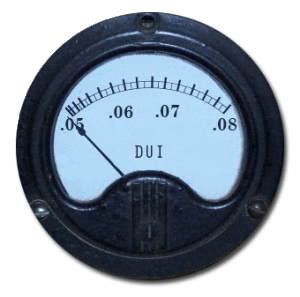 Most people who drink think about just one number, if that: how many drinks they had. They might have an idea of how many drinks they can handle, and how many it takes before they are no longer capable of driving safely.
Most people who drink think about just one number, if that: how many drinks they had. They might have an idea of how many drinks they can handle, and how many it takes before they are no longer capable of driving safely.
They’re usually wrong, but more about that later.
A more exact measurement of intoxication is blood alcohol concentration (BAC). Anyone who drives knows that the legal BAC limit in the US is .08. This means that the amount of ethanol in your system may not exceed .08 grams in 100 milliliters of blood, or .08 grams in 210 liters of breath.
But that’s still a number, and for many, a more vague one than the tally of drinks. What does it mean?
How Many Drinks to Reach .08 BAC?
Every person’s metabolism is different, and a drink that might just relax one person might incapacitate another. Generally, size, gender and age will all figure into it. The old rule is 2-3 drinks for a 120-pound woman, and 3-4 for a 160-pound man. Many factors can throw off those numbers, though. Food eaten, the time taken with each drink, and physical condition can all influence how drunk a person gets.
Symptoms at .08 BAC
A person with a BAC of .08 will occasionally stumble when they get up from a table, though not inevitably. They might forget things. Usually they’ll be in a good mood – the expression “feeling no pain” probably originated at this blood alcohol level.
People at .08 are uninhibited; they do things they might not do while sober. They might pat a friend on the back just because they like them, or tell a joke that would be beyond the pale if alcohol weren’t present.
None of these are the end of the world, and in truth, there are worse things than being .08 at a party (being .16, for instance).
Driving at .08 BAC
Get behind the wheel, and things change. Muscle coordination diminishes. For the record, muscle coordination is needed for braking and steering. Eye coordination – needed to follow other drivers and spot danger – is also weakened.
Reflexes are slowed at .08, so it might take a lot longer to hit the brake if you see a pedestrian walk out into the road. Hearing and sight are also worse at this level of impairment. You’ll also have lost some of your self-control, which means that bad decisions and impulsive reactions are more likely.
Too Generous a Standard?
There are those who argue that .08 is too high. And in fact, many countries around the world do employ lower BAC limits for drunk driving. Note too that you can be convicted of impaired driving even if your blood alcohol is lower than .08. If a police officer judges that you are impaired by the way you are handling your vehicle, you are liable for a DUI. In fact, many states have separate laws for driving while impaired and driving with a BAC of .08 or more.
And here’s the kicker: many people with an .08 BAC think they’re just fine to drive. Part of the reason is that alcohol, which makes you a bad driver, also makes you a bad judge of whether or not you’re a bad driver. It’s a paradox that costs thousands of lives every year.
The Key – Don’t Push Your Luck
A good-quality portable breathalyzer is not a bad idea for learning how your body racks up the BAC numbers. But take care: just because you are under the legal limit, you can still be much too drunk to drive. The safest bet is not to drive at all when you’ve been drinking. You’d be surprised how little alcohol it takes to cause one small slip – possibly a disastrous one. The smart move is to not try to beat the numbers.
If you have already received a DUI, Monitech can help. Visit one of our service center locations for ignition interlock installation or contact us to learn more.
